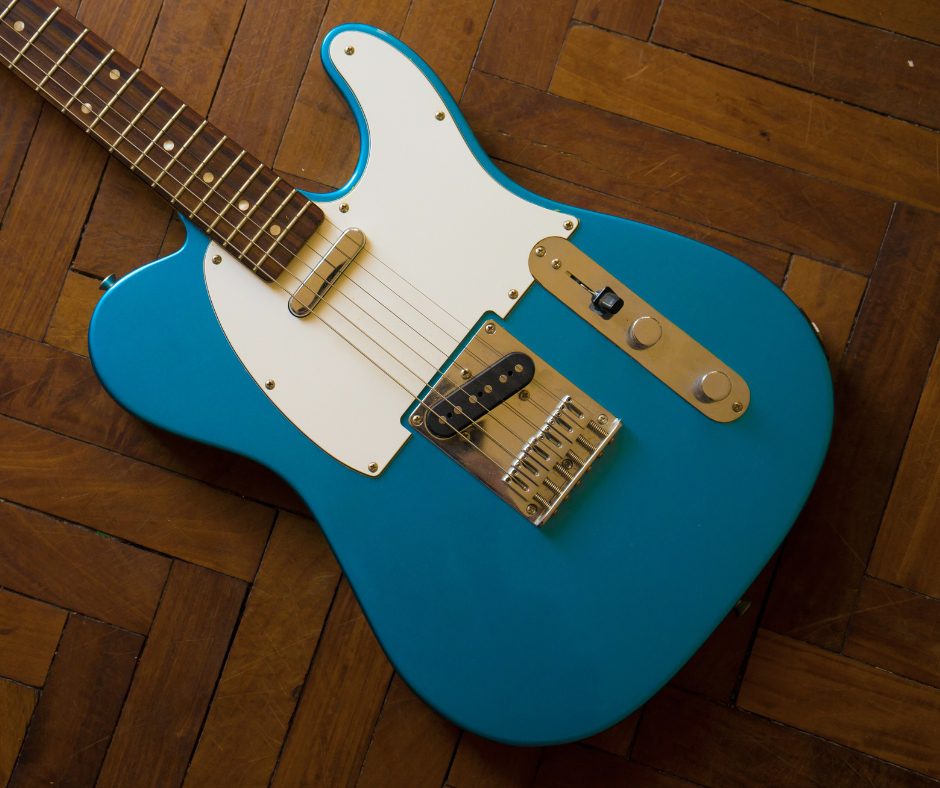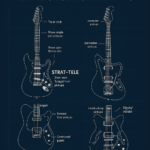The Iconic Journey of the Fender Telecaster: From Birth to Legendary Status
Few instruments in music history have achieved the iconic status of the Fender Telecaster. Known for its unmistakable shape, distinctive twang, and incredible versatility, the Telecaster has been a favorite of musicians across genres for over 70 years. From its humble beginnings in a California workshop to its position as a staple in rock, country, jazz, and blues, the Telecaster’s journey is a fascinating story of innovation, adaptation, and cultural influence. Let’s take a closer look at how the Fender Telecaster became the guitar that changed music forever.
The Birth of a Classic: The Early 1950s
The story of the Telecaster begins in the late 1940s with Leo Fender, a visionary inventor and founder of Fender Musical Instruments Corporation. Unlike other guitar makers of his time, Leo Fender wasn’t a musician; he was an electronics technician who saw the potential in building an electric guitar that was simple, affordable, and easy to manufacture. Fender set out to create a solid-body guitar that could be mass-produced, and in 1950, the world was introduced to the Fender Esquire — the precursor to the Telecaster.
The Esquire was the first mass-produced solid-body electric guitar, featuring a single pickup, a bolted-on neck, and a straightforward, no-frills design. While it attracted some attention, Fender soon realized that musicians wanted a two-pickup version, so he quickly adapted the design, and in 1951, the Fender Broadcaster was born.
However, the name “Broadcaster” would not last long. A trademark dispute with the Gretsch Company, which produced a drum kit called the “Broadkaster,” forced Fender to change the guitar’s name. In 1952, the guitar was officially rebranded as the “Telecaster,” inspired by the revolutionary new technology of television. This simple, sleek guitar would soon become a favorite of musicians looking for a durable and distinctive sound.
Defining Features and Early Popularity
The Telecaster was unlike any guitar that had come before it. Its solid-body design reduced feedback, a common problem with hollow-body electric guitars. It featured a bolt-on neck, making repairs and modifications easier and less expensive. Its two single-coil pickups produced a bright, cutting tone that could easily slice through any mix. This sound, combined with its lightweight and ergonomic design, made the Telecaster an instant hit among guitarists.
Early adopters of the Telecaster included country and western musicians who were drawn to its twangy sound, perfect for the genre. Artists like Buck Owens and Don Rich helped popularize the Telecaster in country music. However, it wasn’t long before the Telecaster crossed over into rock and roll. In the hands of artists like James Burton, Steve Cropper, and Keith Richards, the Telecaster’s distinctive sound began to shape the music of the 1950s and 1960s.
The Telecaster in the Hands of Legends
The 1960s and 1970s were a period of immense cultural and musical change, and the Telecaster was at the heart of it. As rock music began to take center stage, guitarists sought new ways to express themselves, and many found that the Telecaster offered the perfect blend of simplicity and flexibility.
Keith Richards of The Rolling Stones made the Telecaster a rock and roll icon, especially with his famous modified “Micawber” Telecaster, which he used to craft the riff for “Brown Sugar.” At the same time, Steve Cropper of Booker T. & the M.G.‘s used his Telecaster to lay down some of the most famous soul and R&B tracks of the era, including Otis Redding’s “Sittin’ On The Dock of the Bay.”
The Telecaster also found a place in the emerging genres of blues and jazz. Albert Collins, known as “The Master of the Telecaster,” used the guitar’s ice-pick tone to define his signature style. Jazz players like Mike Stern began using the Telecaster for its clarity and responsiveness, proving that it could handle complex chord voicings and articulate melodies.
The Punk and Alternative Rock Eras
By the late 1970s and 1980s, the Telecaster had become a go-to choice for punk and alternative rock bands. Its minimalist design and rugged construction resonated with the stripped-down aesthetic of the punk movement. Artists like Joe Strummer of The Clash used the Telecaster to deliver raw, powerful performances that defined a new generation of music.
In the 1990s, the Telecaster continued to evolve with the rise of alternative rock. Bands like Radiohead, with Jonny Greenwood, used the Telecaster to explore new sonic territories, incorporating effects and experimental techniques that further expanded the guitar’s versatility. Its use by artists such as Bruce Springsteen, with his signature “Esquire,” showcased the guitar’s ability to handle everything from rock anthems to quiet, introspective ballads.
Modern Day and Enduring Legacy
Today, the Fender Telecaster remains one of the most popular guitars in the world. Its enduring appeal lies in its simplicity, reliability, and versatility. From classic rock to indie, country to metal, and jazz to blues, the Telecaster has proven time and time again that it can adapt to any genre.
Modern players continue to be drawn to the Telecaster for its unique sound and playability. Artists like John 5, Brad Paisley, and Jim Root have made the Telecaster a central part of their sound, demonstrating that this guitar, born in the early 1950s, is just as relevant today as it was when it first hit the scene.
Conclusion: A Timeless Instrument
The history of the Fender Telecaster is a testament to the power of simplicity and innovation. Over the decades, it has remained relatively unchanged, a true testament to Leo Fender’s original vision. It’s a guitar that has broken genre boundaries, inspired countless musicians, and continues to evolve with the times. Whether you’re a seasoned professional or just picking up a guitar for the first time, the Telecaster remains an instrument that speaks to the heart of music itself.
So next time you hear that iconic Tele twang, remember — you’re listening to a piece of musical history.







